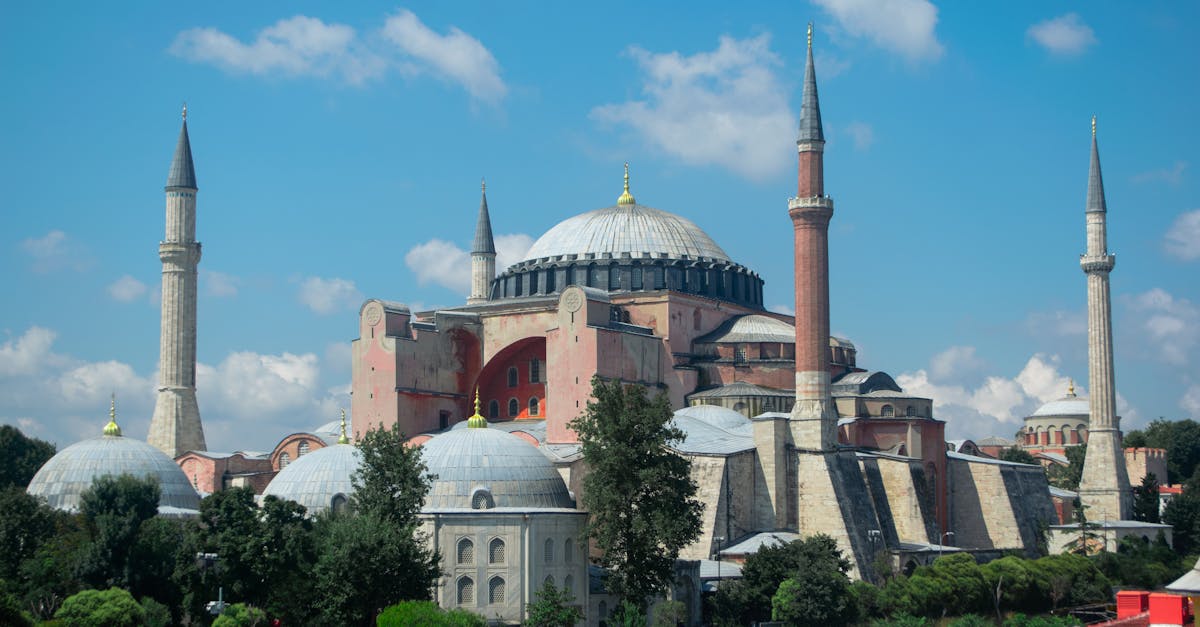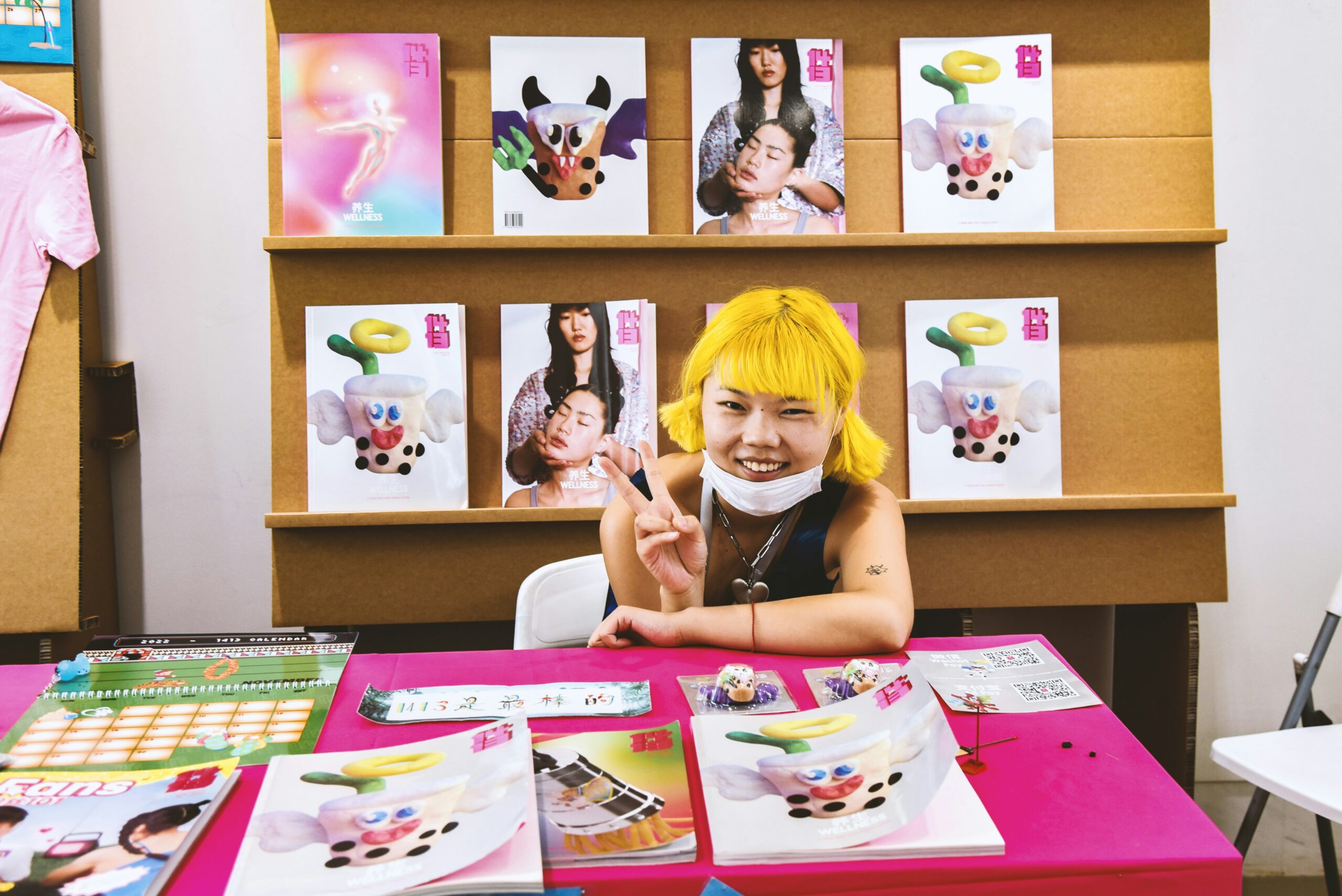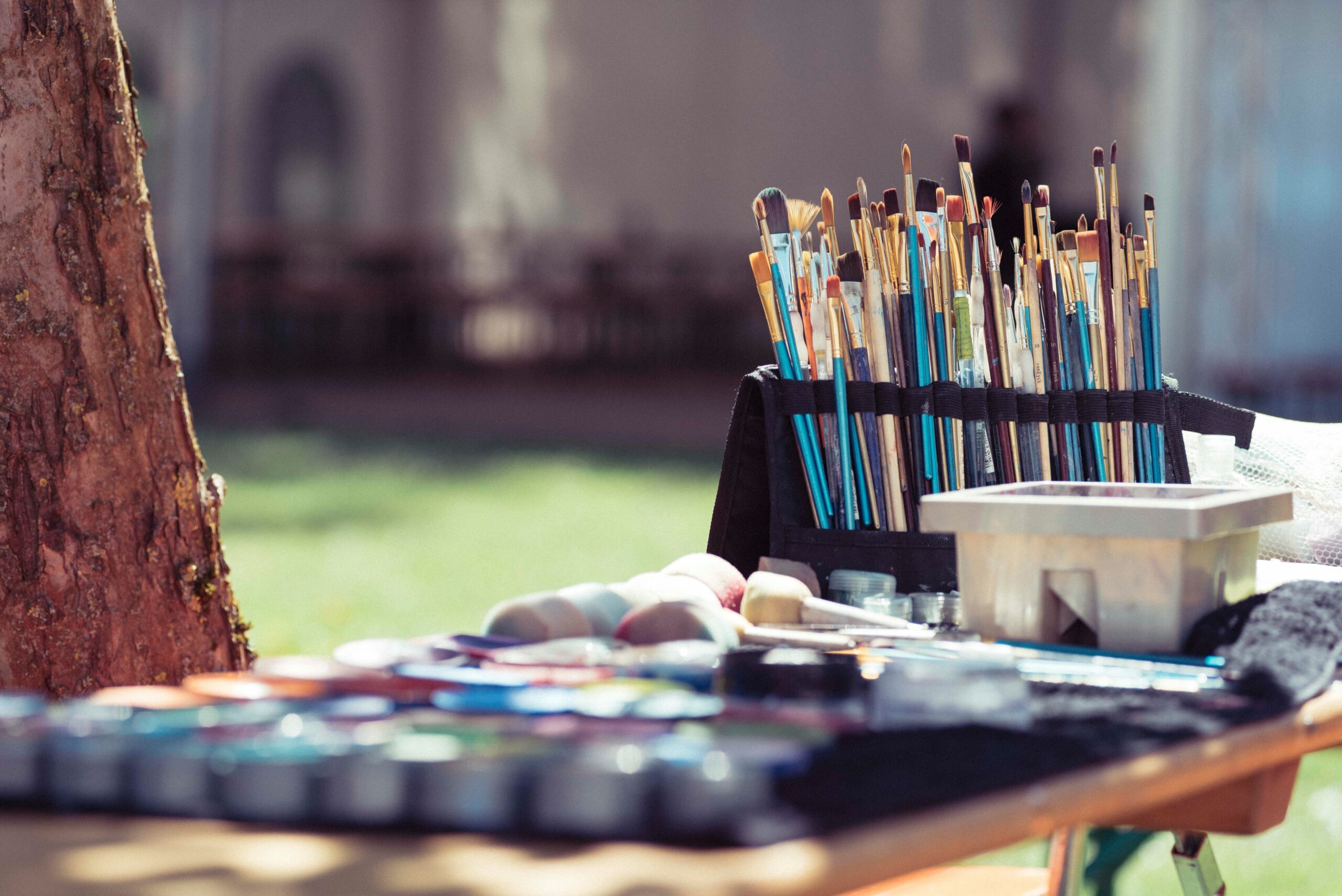What Is the Biggest and Most Famous Art Fair in the World? Discover Art Basel’s Global Impact
Every year the world’s top artists collectors and galleries gather in one place to celebrate creativity like nowhere else. I’ve always been fascinated by how a single event can bring together such a diverse crowd all united by their passion for art. The buzz the energy and the sheer scale of it all make this art fair truly unforgettable.
When people talk about the biggest and most famous art fair in the world one name always stands out. It’s more than just an exhibition—it’s a global phenomenon that sets the trends and shapes the future of art. Whether you’re an art lover or just curious about what draws thousands to this spectacular event I’m excited to share what makes it so iconic.
Defining the Biggest and Most Famous Art Fair in the World
Art Basel in Switzerland ranks as the biggest and most famous art fair in the world. I see galleries from more than 35 countries and territories, including notable examples like Gagosian, David Zwirner, and White Cube, converge in Basel every June. Each year, over 90,000 collectors, curators, and art enthusiasts attend, supporting a global network of contemporary and modern art.
Scale sets Art Basel apart. The fair features more than 200 leading galleries, showing works by 4,000+ artists such as Gerhard Richter, Yayoi Kusama, and Jeff Koons. Museums and art institutions schedule major exhibitions to align with the fair, reinforcing Basel’s global influence.
Global reach reflects Art Basel’s impact. Satellite fairs and events, for example Liste, VOLTA, and Photo Basel, emerge around the city, multiplying the number of visitors and cementing Basel as the world’s key art marketplace for the week.
Market power underscores Art Basel’s reputation. I track sales totaling hundreds of millions of dollars, with individual works often fetching prices from $100,000 up to $20 million. Auction houses and private sales coordinate with the fair, reflecting its central role in setting international art market trends.
Key Metrics of Art Basel (Basel, Switzerland)
| Metric | Data (Recent Years) |
|---|---|
| Annual Attendees | 90,000+ |
| Participating Galleries | 200+ |
| Represented Countries/Territories | 35+ |
| Artists Featured | 4,000+ |
| Sales Volume (USD) | $300 million+ |
I connect the energy, diversity, and commercial power of Art Basel in Basel with its unique status—no other art fair matches its influence on both the public’s visual experience and the global art market’s direction.
The Story Behind the World’s Leading Art Fair

Art Basel emerged as the centerpiece of the global art calendar, building a legacy based on innovation and exclusivity. My focus here is on its key origins and the expansive reach that cemented its position at the summit of international art fairs.
Origins and Historic Milestones
Art Basel started in 1970 when Basel gallerists Ernst Beyeler, Trudi Bruckner, and Balz Hilt created a fair that brought together galleries and collectors from across Europe. My reading of early documents shows 90 galleries and 30 publishers from 10 countries took part in the debut year.
Quick expansion defined the coming decades:
- 1970: Launched in Basel, Switzerland, with 16,000 visitors.
- 1980s: Established as Europe’s leading marketplace for Modern and contemporary art.
- 1999: Art Basel’s founders sold the fair to the Messe Basel convention center, marking institutional growth.
Significant milestones such as the introduction of new exhibition sectors, public art projects, and the Parcours city installations reflect the fair’s ongoing legacy of experimentation and cultural influence.
Historic Art Basel Timeline
| Year | Milestone |
|---|---|
| 1970 | Fair launched in Basel with 90 galleries |
| 1975 | Attendance exceeded 30,000 visitors |
| 2002 | Art Basel Miami Beach inaugurated |
| 2013 | Art Basel Hong Kong established |
| 2022 | Visitor attendance reached over 90,000 in Basel |
Growth and Global Impact
Art Basel’s global presence transformed the landscape for both artists and collectors, extending the fair’s footprint to major art capitals. My analysis tracks direct market and cultural effects.
- Expansion: Basel, Miami Beach (2002), Hong Kong (2013).
- Diversity: Works shown span Modern and contemporary movements, from established masters to emerging talents, exemplified by presentations from Hauser & Wirth and Gagosian.
- Market Forces: Sales regularly approach $400M per edition at Basel, based on reports by The Art Newspaper and Art Basel’s annual market analysis.
- Institutional Influence: Public programming and collaborations with leading museums such as Fondation Beyeler and Kunstmuseum Basel position the fair at the core of critical discussions in art.
Art Basel Global Statistics
| Location | Year Established | 2023 Gallery Count | Countries Represented |
|---|---|---|---|
| Basel | 1970 | 285 | 40+ |
| Miami Beach | 2002 | 277 | 35+ |
| Hong Kong | 2013 | 177 | 32+ |
Satellite events and city-wide partnerships show Art Basel’s role in urban transformation, economic impact, and trendsetting in the visual arts. This evolution set a benchmark no other art fair matches in scale, reach, or influence.
Features That Set the Art Fair Apart
Distinct programs, curated selections, and global reach define Art Basel’s continued influence. Each edition brings top-tier galleries, diverse artworks, and an immersive experience for all visitors.
Galleries and Artists Participation
Careful selection of galleries for Art Basel ensures representation of the highest caliber. Leading galleries from cities like New York, London, and Paris regularly present at Basel. Over 4,000 artists—including celebrated figures like Gerhard Richter, Cindy Sherman, and Ai Weiwei—have exhibited their work at recent editions. Emerging talents gain exposure alongside established masters, reinforcing the fair’s reputation as a platform for discovery and innovation.
Table: Leading Gallery Representation at Art Basel (2023 Example)
| Region | Number of Galleries | Example Galleries |
|---|---|---|
| Europe | 110 | Gagosian, White Cube |
| North America | 60 | David Zwirner, Pace |
| Asia | 25 | Pearl Lam, Taka Ishii |
| South America | 10 | Galeria Luisa Strina |
| Africa | 5 | Stevenson, Goodman |
Artworks and Exhibitions
High-value artworks, including painting, sculpture, photography, and digital media, headline the show. Curated sectors, such as Feature and Statements, emphasize historical works and solo projects. Monumental installations and site-specific pieces regularly dominate the exhibition space, with recent highlights including Yayoi Kusama’s immersive environments and Theaster Gates’ sculptural interventions. Specialized sectors like Unlimited offer large-scale pieces that transcend traditional booth formats, creating strong visual impact and driving critical discourse.
Table: Key Exhibition Sectors at Art Basel
| Sector | Focus | Example Artists |
|---|---|---|
| Galleries | Leading modern & contemporary art | Gerhard Richter, Joan Mitchell |
| Feature | Curated projects & art history | Louise Bourgeois, David Hammons |
| Statements | Solo presentations, emerging artists | Zadie Xa, Christina Quarles |
| Unlimited | Monumental works, installations | Anish Kapoor, Elmgreen & Dragset |
Visitor Experience and Cultural Influence
Attendees encounter immersive experiences that blend art discovery with networking. Special programs include conversations, panels with art world leaders, and guided tours. Cultural events extend beyond the fair venue, with installations in museums like the Kunstmuseum Basel and performances in public spaces. Art Basel’s influence radiates through satellite fairs and citywide collaborations—events like Volta and Liste add vibrancy to the local art scene and strengthen Basel’s position as the central hub for contemporary art every June. Collectors, curators, and enthusiasts gain direct access to both market-shaping transactions and critical dialogue, reinforcing Art Basel’s status as the benchmark for international art fairs.
Comparing Other Major Art Fairs Globally

Global art fairs compete for attention, scale, and impact, though none reach Art Basel’s prominence. I see distinct positioning among these fairs based on exhibitor profiles, audience size, and sales influence.
Art Basel vs. Frieze, TEFAF, and Others
Art Basel leads in both international reach and market volume, but other art fairs claim specialized strengths:
- Frieze Art Fair: London and New York editions attract over 60,000 visitors, presenting curated contemporary galleries, emerging artists, and significant critical engagement. Frieze prioritizes innovation with themed sections and site-specific installations.
- TEFAF Maastricht: This Dutch fair focuses on fine art, antiques, and design, inviting around 250 exhibitors. TEFAF draws collectors seeking high-value Old Masters, rare antiquities, and 20th-century masterpieces. TEFAF emphasizes provenance and vetting rigor.
- FIAC (Paris): The Paris-based International Contemporary Art Fair draws 70,000+ visitors and over 150 leading galleries. I note FIAC’s strong European client base and a focus on cutting-edge artistic practices.
- The Armory Show (New York): Over 200 international galleries participate, highlighting both modern masters and contemporary innovators. Armory Show offers diverse thematic programming and positions itself as a gateway to the US art market.
Major Global Art Fairs Comparison Table
| Fair | Location | Annual Visitors | Exhibitors | Specialization | Notable Features |
|---|---|---|---|---|---|
| Art Basel | Basel, Miami, HK | 90,000+ | 200+ | Modern & Contemporary | Satellite events, museum collaborations |
| Frieze | London, NY, LA | 60,000+ | 160+ | Contemporary | Curated projects, emerging artists |
| TEFAF Maastricht | Maastricht | 70,000+ | 250 | Old Masters to Design | Vetting, provenance, cross-category mix |
| FIAC | Paris | 70,000+ | 150+ | Contemporary | European focus, public art programs |
| Armory Show | New York | 65,000+ | 200+ | Modern & Contemporary | Thematic sections, US market access |
I track that each fair shapes local market trends, yet Art Basel’s tri-continental presence and market volume surpass others. Exhibitor selection, collector attendance, and curatorial ambition link these events, reinforcing their global relevance in the competitive art fair ecosystem.
Why This Art Fair Reigns Supreme

Art Basel dominates the art world through unmatched attendance, commercial impact, and curatorial excellence. Each edition draws more international galleries, collectors, and curators than any other fair, fueling its heavyweight status in shaping global art trends.
Unmatched Global Influence
Art Basel leads in international reach. Over 200 galleries from five continents display works by over 4,000 artists. Museums and institutions align major exhibitions with the fair, amplifying its profile and attracting a broader audience. Sales volumes routinely hit hundreds of millions, signaling powerful market influence and sustained media visibility.
Selective Exhibitor List
The juried selection process maintains elite standards. Each gallery applies and undergoes rigorous vetting from an international selection committee. This ensures presentation quality, spotlighting both blue-chip artists and emerging talent. Cities like New York, Paris, London, and Berlin find strong representation, blending established names with innovative newcomers.
| Metric | Art Basel (Basel) | Frieze (London) | TEFAF (Maastricht) |
|---|---|---|---|
| Year Established | 1970 | 2003 | 1988 |
| Annual Visitors | 90,000+ | 60,000+ | 70,000+ |
| Exhibiting Galleries | 200+ | 160+ | 275+ |
| Artists Showcased | 4,000+ | 1,000+ | 6,500+ |
| Average Sales Volume | $400M | $130M | $700M+ |
| International Presence | 3 Continents | 2 Continents | 1 Continent |
Critical Dialogues and Institutional Partnerships
Art Basel stands at the crossroads of artistic discourse. Museum directors, curators, and critics use the platform for debates, panels, and public programs. Numerous institutions schedule new acquisitions and collaborations during the fair, supporting collection-building and knowledge exchange at the highest level.
Program Diversity and Art Innovation
Distinct exhibition sectors foster experimentation. Feature presents art-historically significant work. Statements spotlights solo projects from up-and-coming artists. Unlimited supports ambitious, large-scale installations beyond the typical booth format. Art Basel encourages exploration of digital media, performance, film, and emerging practices, drawing leading-edge creators from all genres.
Impact on the City of Basel
Local business, hospitality, and tourism sectors experience a marked boost during Art Basel week. The city transforms into a cultural epicenter, with pop-up shows, satellite fairs, and creative activations in both public and private spaces. This local-global synergy contributes to Basel’s unique role in the world art ecosystem.
| Basel During Art Basel Week | Metric/Description |
|---|---|
| Hotel Occupancy Rate | 98%+ |
| Temporary Public Art Installations | 50+ across city sites |
| Satellite Fairs | 10+ (e.g., Liste, Volta, Photo Basel) |
| Estimated Visitor Spending | Over $100M in economic activity |
Art Basel’s reach, programming, and marketplace command ensure its standing as the leading destination for contemporary and modern art, reflected in its unmatched statistics and global engagement.
Conclusion
Art Basel stands as more than just an event—it’s a driving force in the global art world. Each year I find myself inspired by the sheer creativity and ambition on display from every corner of the globe.
Whether you’re a seasoned collector or simply curious about the art world, there’s something magnetic about the energy in Basel. The connections made and the boundaries pushed here have a lasting impact on artists, galleries, and the cultural landscape for years to come.
Frequently Asked Questions
What is Art Basel?
Art Basel is the world’s leading art fair, held annually in Basel, Switzerland. It brings together top galleries, artists, collectors, and art lovers to showcase and celebrate modern and contemporary art from around the globe.
When and where does Art Basel take place?
Art Basel takes place every June in Basel, Switzerland. The event is held at Messe Basel, the city’s exhibition center, drawing attendees from more than 35 countries each year.
Why is Art Basel so important in the art world?
Art Basel is important because it influences international art trends, provides a platform for networking, and drives the art market. Its sales volume and curated programming make it a key event for artists, collectors, galleries, and institutions.
How many galleries and artists participate in Art Basel?
More than 200 leading galleries and over 4,000 artists participate in Art Basel each year, presenting a diverse mix of established and emerging talents from across the world.
What types of art are displayed at Art Basel?
Art Basel showcases a wide range of works, including painting, sculpture, photography, installations, digital art, and more. Specialized sectors highlight historical works and solo projects, offering something for every art enthusiast.
How does Art Basel compare to other major art fairs?
While other art fairs like Frieze and TEFAF have unique strengths, Art Basel stands out for its tri-continental reach, highest attendance, commercial impact, and diversity of exhibitors. Its influence on market trends and artistic discourse is unmatched.
What is the history of Art Basel?
Art Basel was founded in 1970 by Swiss gallerists Ernst Beyeler, Trudi Bruckner, and Balz Hilt. Since then, it has expanded globally, adding editions in Miami Beach and Hong Kong, and has become the premier event for modern and contemporary art.
How does one attend Art Basel?
Tickets for Art Basel can be purchased online or at the venue. The fair welcomes both industry professionals and the general public, though special previews and VIP events may be by invitation only.
What impact does Art Basel have on the local Basel economy?
During the fair, Basel becomes a cultural epicenter, attracting thousands of international visitors. This influx significantly boosts local tourism, hospitality, and related industries, benefiting the city’s economy each year.
Can emerging artists participate in Art Basel?
Yes, Art Basel features sectors like Statements that focus on solo projects by emerging artists. Galleries representing new talent may apply to showcase their artists through a competitive selection process.
